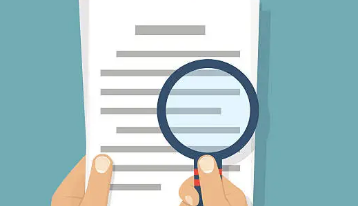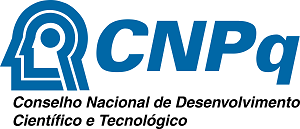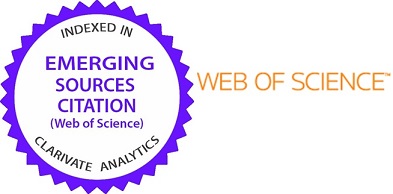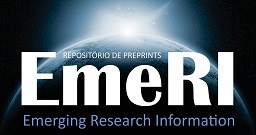Aprimoramento das habilidades de leitura e formação: um estudo na Universidade de Khanh Hoa
DOI:
https://doi.org/10.25053/redufor.v8.e11367Palavras-chave:
habilidades de leitura, inglês para fins específicos, atividades de traduçãoResumo
O ESP capacita os alunos com habilidades de leitura para que tenham sucesso em suas áreas de atuação. O uso de atividades de tradução para aprimorar as habilidades de leitura é uma abordagem interessante. O presente estudo fornece insights ao investigar as necessidades e a orientação de aprendizado dos alunos. O experimento planejado para avaliar o impacto das atividades de tradução nas habilidades de leitura em inglês dos alunos fornece evidências empíricas da eficácia da metodologia de pesquisa. Ao comparar o grupo experimental com o grupo de controle, os autores podem medir o sucesso da abordagem e identificar áreas que precisam ser aperfeiçoadas. Avaliar a satisfação dos alunos e os benefícios que eles percebem com as atividades de tradução é essencial para medir o sucesso geral das aulas de ESP. Altos níveis de satisfação indicam engajamento e experiência de aprendizado positiva, enquanto as percepções dos alunos sobre os benefícios que obtêm podem ajudar a promover a abordagem para outros alunos em potencial. A abordagem tem implicações para os alunos de idiomas do UKH e de outros países.
Downloads
Referências
ADILBAYEVA, U.; MUSSANOVA, G. A.; MOMBEKOVA, N. B.; SUTTIBAYEV, N. A. Digital Communication Technology for Teaching a Foreign Language and Culture through Reading. International Journal of Society, Culture & Language, [S.l.], v. 10, n. 3, p. 21-30, 2022. DOI: https://doi.org/10.22034/IJSCL.2022.543110.2472.
AHMADJONOVNA, B. G. The effectiveness of grammar translation method. American Journal of Interdisciplinary Research and Development, [S.l.], v. 5, p. 236-238, 2022.
AI, B.; KOSTOGRIZ, A.; WEN, D.; WANG, L. Student presentations as a means of teaching and learning English for Specific Purposes: an action research study. Teaching in Higher Education, [S.l.], 2018. DOI: doi.org/10.1080/13562517.2018.1557136. DOI: https://doi.org/10.1080/13562517.2018.1557136
AKHMEDOVA, M. T.; NARMETOVA, Y. K.; NURMATOVA, I. T.; MALIKOVA, D. U. K. Communicative competence formation in future teachers based on an integrated approach. International Journal of Multicultural and Multireligious Understanding, [S.l.], v. 9, n. 4, p. 54-60, 2022. DOI: http://dx.doi.org/10.18415/ijmmu.v8i10.2999. DOI: https://doi.org/10.18415/ijmmu.v8i10.2999
AL-AWAWDEH, N. The function of ideology in translation: a case study of selected Aljazeera news headlines translated into Arabic. Ijaz Arabi Journal of Arabic Learning, [S.l.], v. 5, n. 1, 2022.
ARIAS-CONTRERAS, C.; MOORE, P. J. The role of English language in the field of agriculture: a needs analysis. English for Specific Purposes, [S.l.], v. 65, p. 95-106, 2022. DOI: https://doi.org/10.1016/j.esp.2021.09.002. DOI: https://doi.org/10.1016/j.esp.2021.09.002
ARMEA, A. P.; CASTRO, M. P.; LLAMADO, M. N.; LOTINO, R. B.; SAN ESTEBAN, A. A.; OCAMPO, D. M. English proficiency and literary competence of English major students: predictor for effective language and literature teaching. Online Submission, [S.l.], v. 12, n. 1, p. 141-151, 2022.
ASMALI, M. Integrating technology into ESP classes: use of student response system in ESP instruction. Teaching English with Technology, [S.l.], v. 18, n. 3, p. 86-104, 2018.
AYACHIA, H. The revival of translation as a fifth skill in the foreign language classroom: a review of literature. AWEJ for Translation & Literary Studies, [S.l.], v. 2, n. 2, 2018. DOI: http://dx.doi.org/10.24093/awejtls/vol2no2.13. DOI: https://doi.org/10.24093/awejtls/vol2no2.13
DAUD, D.; YASIM, S.; MUNAWIR, A. The comparison between direct method and grammar translation method in improving students’ reading comprehension. English Language, Linguistics, and Culture International Journal, [S.l.], v. 2, n. 2, p. 91-101, 2022. DOI: http://dx.doi.org/10.24252/elstic-ij.v2i2.26393. DOI: https://doi.org/10.24252/elstic-ij.v2i2.26393
DENG, M. An analysis of the Grammar Translation Method in the 20th Century and the inevitability of its application in China. The Educational Review, [S.l.], v. 7, n. 3, p. 305-308, 2023. DOI: http://dx.doi.org/10.26855/er.2023.03.002. DOI: https://doi.org/10.26855/er.2023.03.002
DENONCOURT, J. Handbook of intellectual property research: lenses, methods and perspectives. The Cambridge Law Journal, Oxford, v. 81, n. 1, p. 209-212, 2022. DOI: https://doi.org/10.1017/S0008197322000174
DEW, K. N.; TURNER, A. M.; CHOI, Y. K.; BOSOLD, A.; KIRCHHOFF, K. Development of machine translation technology for assisting health communication: a systematic review. Journal of Biomedical Informatics, [S.l.], v. 85, p. 56-67, 2018. DOI: http://dx.doi.org/10.1016/j.jbi.2018.07.018. DOI: https://doi.org/10.1016/j.jbi.2018.07.018
DOLBA, S. Q. Technical terms used in general English textbooks across disciplines. 2022.
FARAHSANI, Y.; HARMANTO, M. D.; NIMASHITA, H. Translation method in translating mechanical engineering terms from English to Indonesian. International Seminar on Language, Education, and Culture, [S.l.], p. 400-411, 2023. DOI: http://dx.doi.org/10.2991/978-2-38476-038-1_45. DOI: https://doi.org/10.2991/978-2-38476-038-1_45
FARIDAH, F.; SETYANINGRUM, R. R.; FALAKHA, E. N. Metacognitive strategy to enhance students’ reading text-ability: case study in the vocational high school. Journal of Applied Studies in Language, [S.l.], v. 6, n. 2, p. 199-205, 2022. DOI: https://doi.org/10.31940/jasl.v6i2.646
FRIEDMAN, T. L. The world is flat: a brief history of the twenty-first century. New York: Macmillan, 2005.
GINTING, P. Translation challenges and strategies: a review of theories. The Seall Journal, [S.l.], v. 3, n. 1, p. 76-84, 2022.
HOUSE, J. Text and context in translation. Journal of Pragmatics, [S.l.], v. 38, n. 3, p. 338-358, 2006. DOI: http://dx.doi.org/10.1016/j.pragma.2005.06.021. DOI: https://doi.org/10.1016/j.pragma.2005.06.021
HOUSE, J. Translation quality assessment: past and present. In: HOUSE, J. (org.). Translation: a multidisciplinary approach. London: Palgrave Macmillan, 2014. p. 241-264. DOI: https://doi.org/10.1057/9781137025487_13
IBRAGIMDJONOVNA, A. M. Developing professional communicative competence of medical students in a foreign language. Eurasian Scientific Herald, [S.l.], v. 15, p. 45-50, 2022.
IMSA-ARD, P. Reading better?: enhancing Thai EFL Secondary School Students’ reading comprehension abilities with the use of graphic organizers. English Language Teaching, [S.l.], v. 15, n. 5, p. 1-13, 2022. DOI: http://dx.doi.org/10.5539/elt.v15n5p1. DOI: https://doi.org/10.5539/elt.v15n5p1
IRSHAD, I.; ANWAR, B. Designing ESP course for computer science students. Journal of Education and Educational Development, [S.l.], v. 5, n. 1, 2018. DOI: https://doi.org/10.22555/joeed.v5i1.1533
JOSEPH, J. E. Translation of adjectival collocations in Sidney Sheldon’s “Tell Me Your Dreams” into Indonesian. Journal of English Teaching, [S.l.], v. 8, n. 3, p. 422-431, 2022. DOI: https://doi.org/10.33541/jet.v8i3.4580
KHAMKAEW, S. The integration of Grammar Translation Method and Individualized Instruction Method in Teaching English for Grade 12 Students. International Journal of English Language Teaching, [S.l.], v. 10, n. 1, p. 1-12, 2022. DOI: https://doi.org/10.37745/ijelt.13/vol10.no1pp.1-12
LAHMAR, M.; METOUCHI, Z. Gain and loss in the translation of cultural aspects from English to Arabic. 2022. Doctoral dissertation, Université Ibn Khaldoun-Tiaret, 2022.
LI, P.; WANG, M.; WANG, J. Named entity translation method based on machine translation lexicon. Neural Computing and Applications, [S.l.], v. 33, p. 3977-3985, 2021. DOI: https://doi.org/10.1007/s00521-020-05509-y
LIN, L.; LIU, J.; ZHANG, X.; LIANG, X. Automatic translation of spoken English based on improved machine learning algorithm. Journal of Intelligent & Fuzzy Systems, [S.l.], v. 40, n. 2, p. 2385-2395, 2021. DOI: http://dx.doi.org/10.3233/JIFS-189234. DOI: https://doi.org/10.3233/JIFS-189234
MAMAJANOVA, G. K. Effective ways to develop the communicative competence of students based on English. Academicia: An International Multidisciplinary Research Journal, [S.l.], v. 12, n. 1, p. 54-58, 2022. DOI: http://dx.doi.org/10.5958/2249-7137.2022.00033.7. DOI: https://doi.org/10.5958/2249-7137.2022.00033.7
MANIATI, M.; HAYDARI, F.; TAZIK, I. K. The effect of ESP text type on Iranian first-year medical students’ language use strategies and test-taking strategies. Mextesol Journal, [S.l.], v. 46, n. 4, p. 1-12, 2022.
MANNAHALI, M.; AZIZAH, L. Translation theory as the basis of translation learning. Rhetoric: Journal of Language, Literature, and its Teaching, [S.l.], v. 15, n. 2, p. 180-184, 2022. DOI: https://doi.org/10.26858/retorika.v15i2.47024
MARIENKO, M.; NOSENKO, Y.; SHYSHKINA, M. Personalization of learning using adaptive technologies and augmented reality. arXiv preprint arXiv:2011.05802, [S.l.], 2020. DOI: http://dx.doi.org/10.48550/arXiv.2011.05802. DOI: https://doi.org/10.31812/123456789/4418
MARUF, N.; ANJELY, A. M. R. Utilizing Cooperative Integrated Reading and Composition (CIRC) with mobile learning to enhance students’ reading comprehension. Jurnal Bahasa dan Sastra Inggris, [S.l.], v. 9, n. 2, p. 10-19, 2020. DOI: https://doi.org/10.31314/british.9.2.10-19.2020
MOORKENS, J.; CASTILHO, S.; GASPARI, F.; DOHERTY, S. Translation quality assessment. Machine Translation: Technologies and applications ser. Cham: Springer International, 1, 299, 2018. DOI: https://doi.org/10.1007/978-3-319-91241-7_1
MORADIMOKHLES, H.; HWANG, G. J. The effect of online vs. blended learning in developing English language skills by nursing student: an experimental study. Interactive Learning Environments, [S.l.], v. 30, n. 9, p. 1653-1662, 2022. DOI: http://dx.doi.org/10.1080/10494820.2020.1739079. DOI: https://doi.org/10.1080/10494820.2020.1739079
MULIYAH, P.; AMINATUN, D. Teaching ESP in Vocational high school: teachers' beliefs and practices. Journal of English Teaching, [S.l.], v. 6, n. 2, p. 122-133, 2020. DOI: http://dx.doi.org/10.33541/jet.v6i2.1756. DOI: https://doi.org/10.33541/jet.v6i2.1756
NGUYEN, N. D. Teaching reading comprehension to students of Journalism at University of Social Sciences and Humanities, Ho Chi Minh City, Vietnam. 2005. Thesis. University of Social Sciences & Humanities, Ho Chi Minh City, Vietnam. The Library and Information Center of University of Social Sciences & Humanities, Ho Chi Minh City, Vietnam, 2005.
PAHAMZAH, J.; SYAFRIZAL, S.; NURBAETI, N. The effects of EFL course enriched with Kahoot on students’ vocabulary mastery and reading comprehension skills. Journal of Language and Linguistic Studies, [S.l.], v. 18, n. 1, p. 643-652, 2022.
PIŽORN, K.; BABUDER, M. K. Teaching English as a foreign/second language students with specific learning difficulties. Center for Educational Policy Studies Journal, [S.l.], v. 12, n. 4, p. 7-11, 2022. DOI: https://doi.org/10.26529/cepsj.1575
POPOVA, O.; MORHUN, O. The development of Ukrainian university students’ discourse-oriented translation competence in Chinese and English as foreign languages. Forum for Linguistic Studies, [S.l.], v. 5, n. 1, p. 130-159, 2023. DOI: https://doi.org/10.18063/fls.v5i1.1622
PORNWIRIYAKIT, P.; DANDEE, W. Translation problems analysis and application of the Grammar-Translation Method in EFL Class. Journal of Educational Issues, [S.l.], v. 8, n. 1, p. 572-591, 2022. DOI: https://doi.org/10.5296/jei.v8i1.19825
PURBA, L.; SETIASARI, W. Translation method of English hymn song into Indonesian version in Kidung Jemaat. Transform: Journal of English Language Teaching and Learning, [S.l.], v. 11, n. 4, p. 126-132, 2022. DOI: https://doi.org/10.24114/tj.v11i4.44040
RAJPRASIT, K. ‘Do as WE do’: teaching world Englishes in a general English course to Thai students. RELC Journal, [S.l.], v. 54, n. 1, p. 291-299, 2023. DOI: http://dx.doi.org/10.1177/00336882211011. DOI: https://doi.org/10.1177/00336882211011276
RAZPOTNIK, Š.; LESAR, I.; PEČEK, M. (ed.). Immigrants in Slovenia through the research prism of students of the Faculty of Education, University in Ljubljana, Faculty of Education. Center for Educational Policy Studies Journal, [S.l.], v. 12, n. 4, p. 271-273, 2021. DOI: https://doi.org/10.26529/cepsj.1573
RETS, I.; ASTRUC, L.; COUGHLAN, T.; STICKLER, U. Approaches to simplifying academic texts in English: English teachers’ views and practices. English for Specific Purposes, [S.l.], v. 68, p. 31-46, 2022. DOI: http://dx.doi.org/10.1016/j.esp.2022.06.001. DOI: https://doi.org/10.1016/j.esp.2022.06.001
ROODBARI, M.; MARZBAN, A.; TALEBI, S. H.; MOHSENI, A. Engineering Students' ESP Problems at Islamic Azad Universities in Mazandaran Province. Journal of Language and Translation, [S.l.], v. 12, n. 3, p. 101-113, 2022. DOI: http://dx.doi.org/10.30495/TTLT.2022.692152.
SABIRJANOVNA, P. Z. A model for developing students’ communicative competence by teaching them intercultural communication. Galaxy International Interdisciplinary Research Journal, [S.l.], v. 10, n. 11, p. 680-683, 2022.
SAFITRI, M.; MARHABAN, S.; ERDIANA, N. A review of Directed Reading Thinking Activity (DRTA) strategy in teaching reading comprehension. English Education Journal, [S.l.], v. 13, n. 2, p. 290-303, 2022. DOI: http://dx.doi.org/10.24815/eej.v13i2.25910. DOI: https://doi.org/10.24815/eej.v13i2.25910
SAIDRASULOVA, S. Implementing effective reading comprehension for ESP learners. International Bulletin of Applied Science and Technology, [S.l.], v. 3, n. 4, p. 51-55, 2023.
SALMANI-NODOUSHAN, M. A. English for specific purposes: traditions, trends, directions. Studies in English Language and Education, [S.l.], v. 7, n. 1, p. 247-268, 2020. DOI: http://dx.doi.org/10.24815/siele.v7i1.16342. DOI: https://doi.org/10.24815/siele.v7i1.16342
STEVANI, M.; TARIGAN, K. E. Evaluating English textbooks by using Bloom’s taxonomy to analyze reading comprehension question. Salee, [S.l.], v. 4, n. 1, p. 1-18, 2023. DOI: http://dx.doi.org/10.35961/salee.v0i0.526. DOI: https://doi.org/10.35961/salee.v0i0.526
STEVANI, M.; TARIGAN, K. E. Need analysis of dyslexia students in English reading comprehension instructions. Journal of English Education and Linguistics Studies, [S.l.], v. 9, n. 2, p. 327-352, 2022. DOI: http://dx.doi.org/10.30762/jeels.v9i2.520. DOI: https://doi.org/10.30762/jeels.v9i2.520
TAMRIN, T. Effective reading instruction in ESP: practical approaches to improving vocational students’ content-area reading comprehension. Research and Innovation in Applied Linguistics, [S.l.], v. 1, n. 1, p. 33-48, 2023. DOI: http://dx.doi.org/10.31963/rial-ej.v1i1.3748. DOI: https://doi.org/10.31963/rial-ej.v1i1.3748
TOSHPULATOVA, M. I. The main features in teaching English for specific purposes. Journal of Integrated Education and Research, [S.l.], v. 1, n. 5, p. 207-214, 2022.
TURSUNOVICH, R. I. Development of communicative competence in teaching foreign language for professional purposes. In: PROCEEDINGS OF INTERNATIONAL CONFERENCE ON SCIENTIFIC RESEARCH IN NATURAL AND SOCIAL SCIENCES, 2., 2023. Conference […]. 2023. p. 26-33.
UMAR, A. T.; MAJEED, A. The Impact of assessment for learning on students’ achievement in English for Specific Purposes: a case study of pre-medical students at Khartoum University: Sudan. English Language Teaching, [S.l.], v. 11, n. 2, p. 15-25, 2018. DOI: http://dx.doi.org/10.5539/elt.v11n2p15. DOI: https://doi.org/10.5539/elt.v11n2p15
WARMING, H. Childhood prism research: an approach for enabling unique childhood studies contributions within the wider scholarly field. Children’s Geographies, [S.l.], v. 20, n. 3, p. 284-296, 2022. DOI: http://dx.doi.org/10.1080/14733285.2020.1787952. DOI: https://doi.org/10.1080/14733285.2020.1787952
WETTE, R. ESP (ESP) and English for academic purposes (EAP). The TESOL encyclopedia of English language teaching, [S.l.], p. 1-7, 2018. DOI: http://dx.doi.org/10.1002/9781118784235.eelt0199. DOI: https://doi.org/10.1002/9781118784235.eelt0199
YU, X.; LIU, C. Curriculum reform of college English teaching in China: from English for general purposes to English for specific purposes. ESP Today, [S.l.], v. 6, n. 2, p. 140-160, 2018. DOI: http://dx.doi.org/10.18485/esptoday.2018.6.2.1. DOI: https://doi.org/10.18485/esptoday.2018.6.2.1
ZAIRJANOVICH, Y. S.; XALMURZAYEVNA, Y. S. Teaching English for tourism students (esp and E-learning). Archive of Conferences, [S.l.], p. 8-10, 2022.
ZOHREVANDI, Z. Translation as a resource. Language, Discourse, and Translation in the West and Middle East, [S.l.], v. 7, p. 181, 1994. DOI: https://doi.org/10.1075/btl.7.25zoh

Publicado
Como Citar
Edição
Seção
Licença
Copyright (c) 2023 Vo Tu Phuong, Nguyen Dang Nguyen

Este trabalho está licenciado sob uma licença Creative Commons Attribution 4.0 International License.
Os autores possuem direitos autorais dos seus textos:
A revista Educação & Formação permite ao autor os direitos de publicação, no entanto, recomenda um intervalo de dois anos para o caso de republicação.
Os nomes e endereços informados nesta revista serão usados exclusivamente para os serviços prestados por esta publicação, não sendo disponibilizados para outras finalidades ou a terceiros.



















